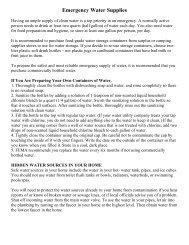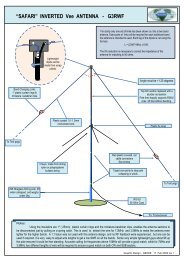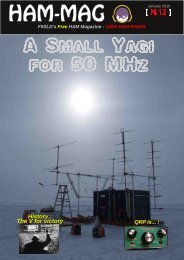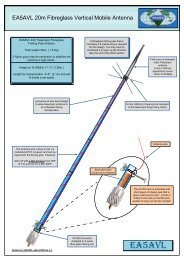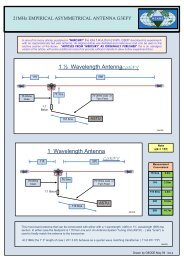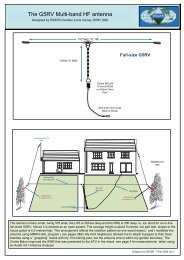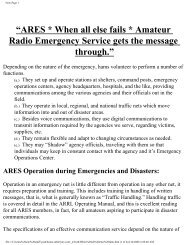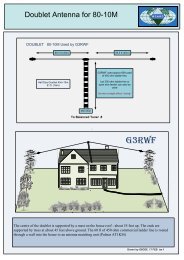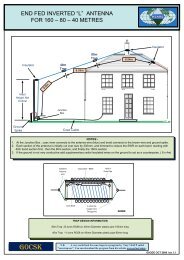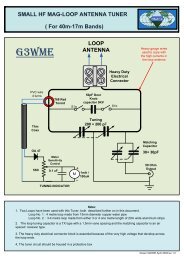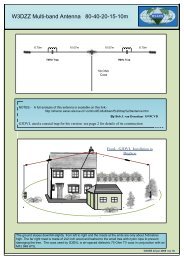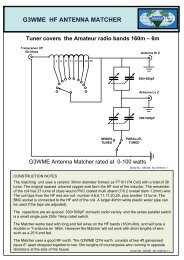Inernational HAM Magazine 100% HAM RADIO - arkansas ares races
Inernational HAM Magazine 100% HAM RADIO - arkansas ares races
Inernational HAM Magazine 100% HAM RADIO - arkansas ares races
You also want an ePaper? Increase the reach of your titles
YUMPU automatically turns print PDFs into web optimized ePapers that Google loves.
MAKE YOUR OWN PRINTED CIRCUITS<br />
By EI9GQ<br />
To make smart looking PCB's, all you need is: A computer, a laser printer, copper clad board, etchant, a<br />
clothes iron and some Epson glossy photo paper. You can buy special film for making PCB's, but I have<br />
found that the Epson paper gives better results. I use Epson photo quality glossy paper for inkjet<br />
printers.<br />
Draw the PCB track layout, using a CAD program or a standard drawing program. Remember to<br />
reverse the image before printing. Most drawing programs have a 'flip horizontal' function. Print the<br />
image on normal A4 paper to make sure that it is the correct size. Check the layout carefully.<br />
PCB LAYOUT<br />
Use a laser printer to print the image on the glossy side of the photo paper. Clean the copper clad<br />
board with steel wool or very fine wet sandpaper. Dry the board thoroughly. Make sure that the board is<br />
clean and free from fingerprints. Place the photo paper face down on the copper clad board. Use<br />
masking tape to hold the paper in position. Don't use vinyl tape. Place the board on a flat surface. You<br />
will be using a very hot iron, so don't use the dining room table. I use the back of an old telephone<br />
directory. Use a hot clothes iron to transfer the track pattern from the paper to the copper board. Don't<br />
be afraid to use lots of heat and pressure. Allow the board to cool. Don't be tempted to lift the paper. Put<br />
the board in a container full of warm soapy water. After about twenty minutes the paper will begin to<br />
dissolve and disintegrate. Carefully remove the paper from the copper board. Rinse under a cold tap to<br />
remove paper residue. You may need to touch up any broken tracks with an etch resist pen. I use a fine<br />
Staedtler laundry marker.<br />
BEFORE ETCHING<br />
[ <strong>HAM</strong>MAG N.14 March 2010 ]



